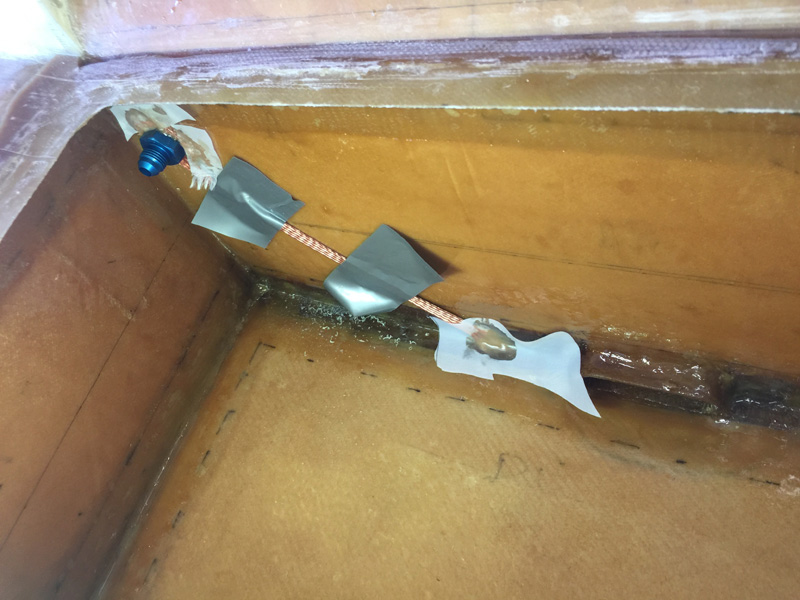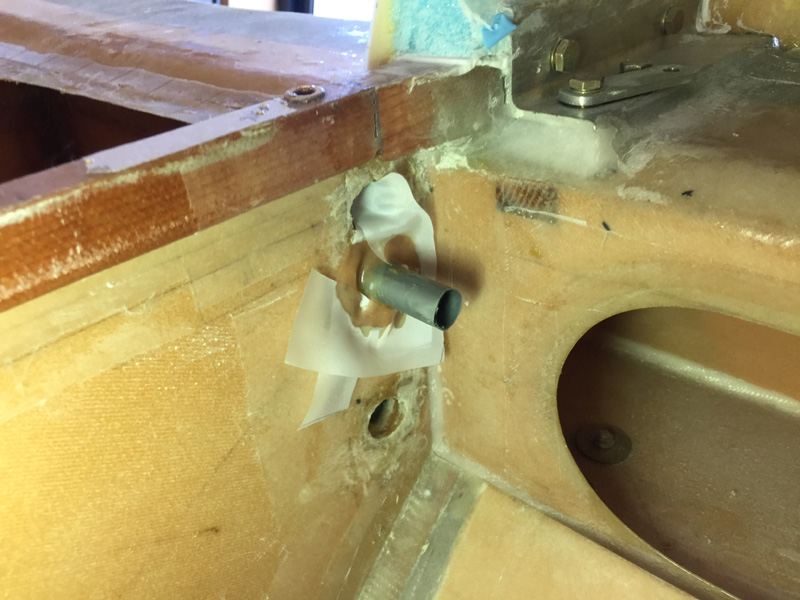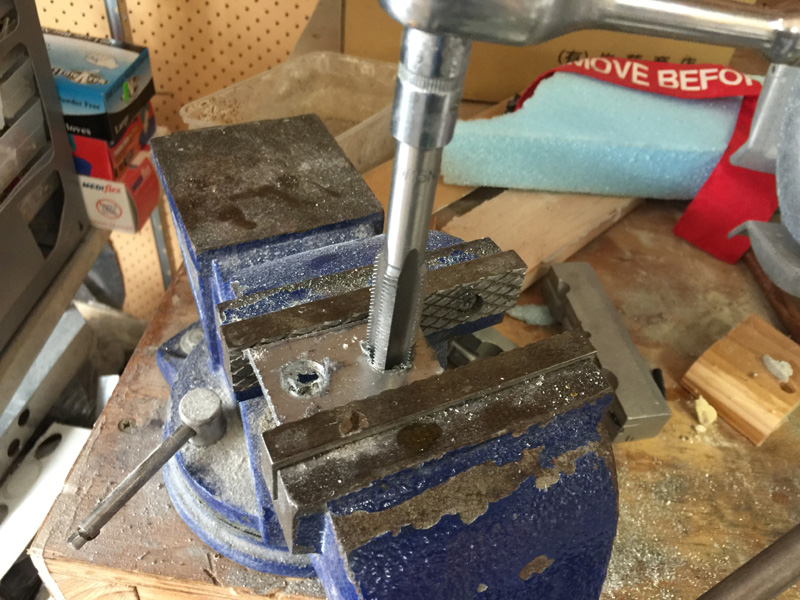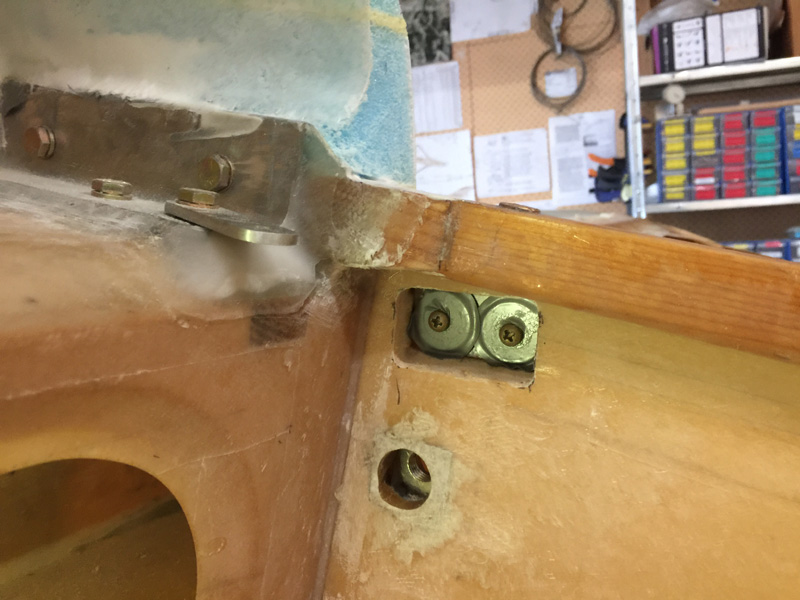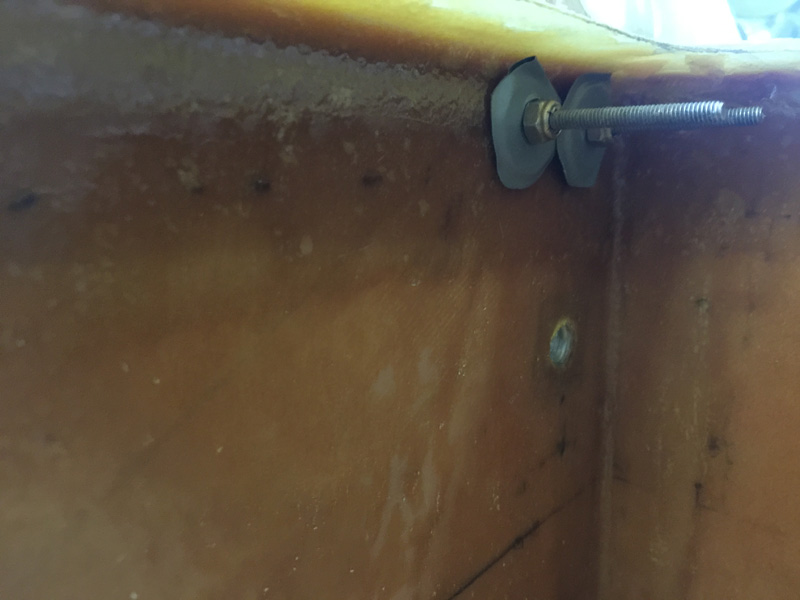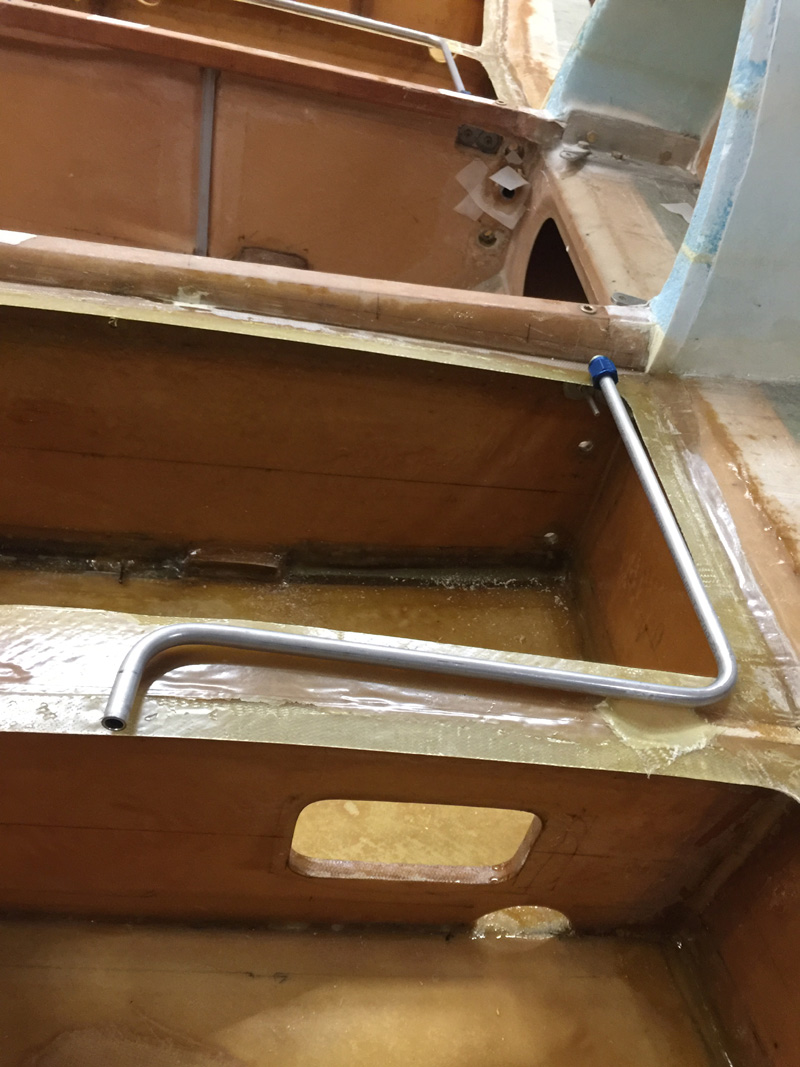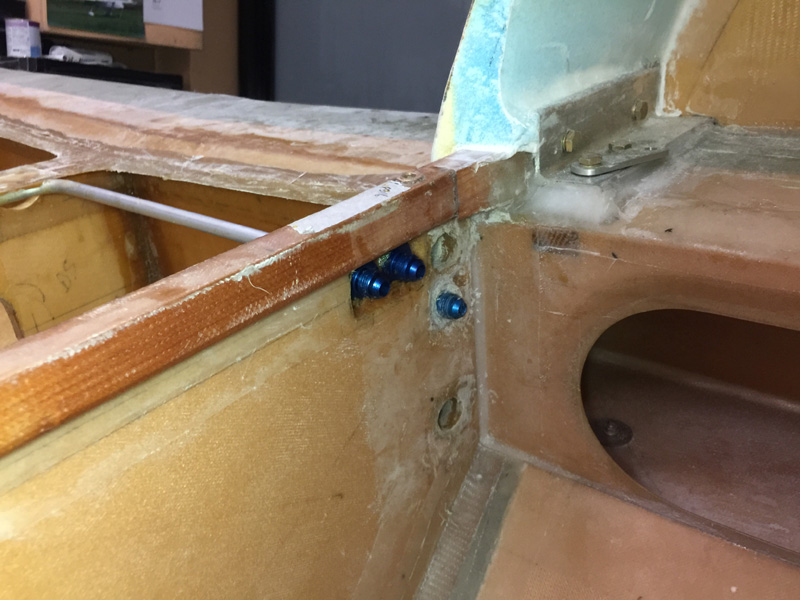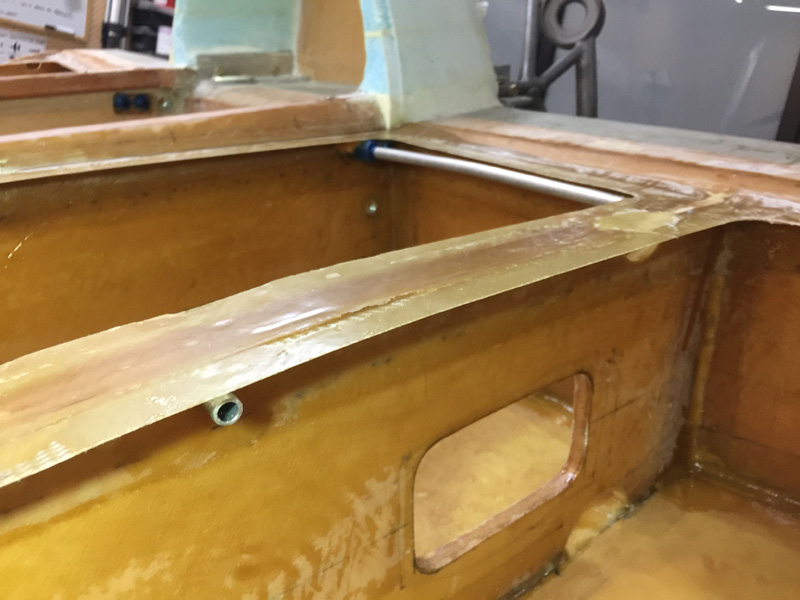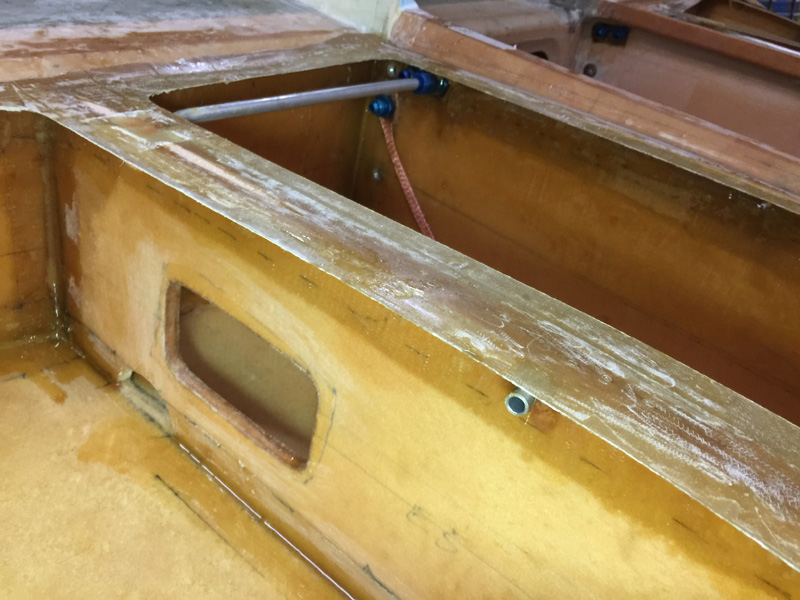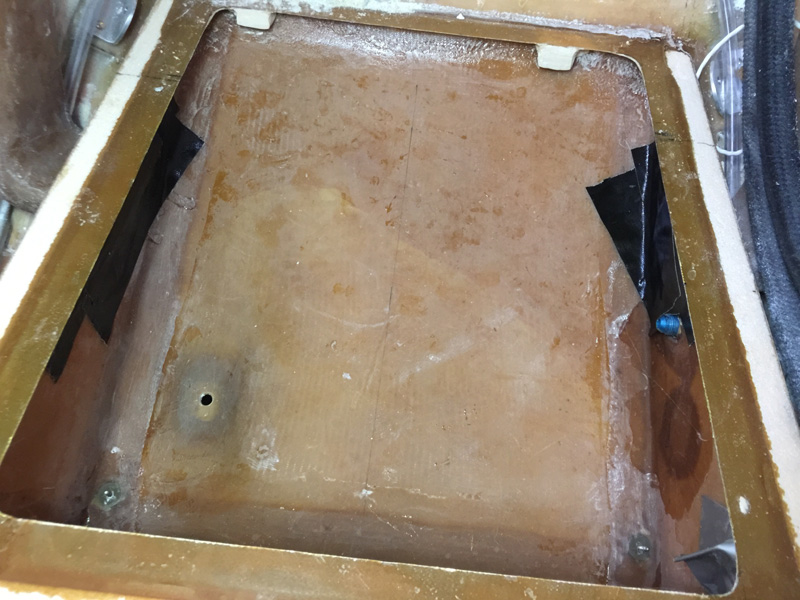| Date: 06-18-2018 | |
| Number of Hours: 10 | |
| Manual Reference: 21-3 |
The last couple of days have been sorting out the fuel vents and the ferry tank fuel line.
Here’s the ferry tank input. I decided to put in an earth strap so that as the tank is filled from it external pumps I can equalise the static charge through the fitting. Yes I had to scrape off some anodizing to ensure contact. This might be unnecessary but I’m happy to add a safety measure here.
Here’s the other side of the aux tank input. Floxed in place and the threads protected while it cures.
Meanwhile I had a change of heart about the vent lines. Plans have you just flox them into the tanks and run them around the rear seat belt holders. Lightweight and efficient. While I had decided to go this way, I just couldn’t do it ‘plans’ when the time came. I’m not exactly sure yet how I’m going to route the vent lines. I’m not 100% on it and the rudder cables go here or maybe down low. AND I think proper AN fittings on my proper plane are a more maintainable solution.
So two hardpoints per side in the one piece of 2024T3 aluminium were made. As you see above I’ve tapped them out for the bulkhead AN832-6D fittings which are 9/16″
The usual method for floxing in these hardpoints.
As an aside, I was going to earth all this to the bottom of the tank with floxed straps going to a click bond. Nope, I’ll use the chain dangling in the tank method instead. My reasoning was that given where the fuel caps are going it was just TOO hard to get to them to be playing around with nuts and fittings. My caps are just not wide enough or going to be near enough to a baffle.
I’ll be going with an earth strap AND a chain going to the cap which will have a bit of tube on the end making it super hard to come out. This will be long enough to touch the tank bottom. All said and done I need to connect the surface of the fuel to the fuel filler to present the same static charge. The filling person will need to clamp onto the chain which will have the strap as well. Chains alone can have a very high resistance and ‘disconnect’ momentarily.
The caps are anodised so no earth would happen there. There is a bolt on the back of the cap that I’ll use. My plan A was looking like making myself a difficult job I didn’t need. Plan B, simple and easy won out for the same result.
Floxed hardpoints on the other side.
While this was happening I got busy making vent lines for each side. Bending and flaring required. Easy to do now I have the right tools. I wish there was more!
Here we are the next day (today) with those fittings floxed into the hardpoints and the vent line for the ‘plans’ mid position vent in place.
You can see here how it ends up at the highest part of the strake. Yes I used flox to ensure it is rigid and I floxed the fitting joins too so they not going anywhere either. Yes and they are under the hat top lip so that when I flox on the top they can’t get flox in them and become blocked.
Here’s the right side which is getting busy. The second vent line is the extra one at the spar. The idea is that when the plane is ‘kneeling’, if not 100% full that vent will be uncovered and so function normally. If the second line is not there, on a hot day I could find fuel running out the vents under the plane. So the second line is a bit of insurance against this.
Now most people run some aluminum tube under the spar lip here to the mid point. Well my take is that where the fitting is, well, its just perfect! So why do I need more tube and another fitting here? No way. A tiny bit of weight saved.
Whats the black tape? I’ve floxed some plastic on to cover the tank outlets. A temporary cover. After cure overnight, if it is sealed OK I can then test the strake bottoms for leaks, separately. If they were open here I’d need the sump top on and I couldn’t test separately. Why make life harder than it has to be?
hahaha I’ve already committed to building this plane instead of sipping drinks with umbrellas in them while lounging on deck chairs in a tropical paradise. What was I thinking? More work tomorrow… lets get this thing built.

